

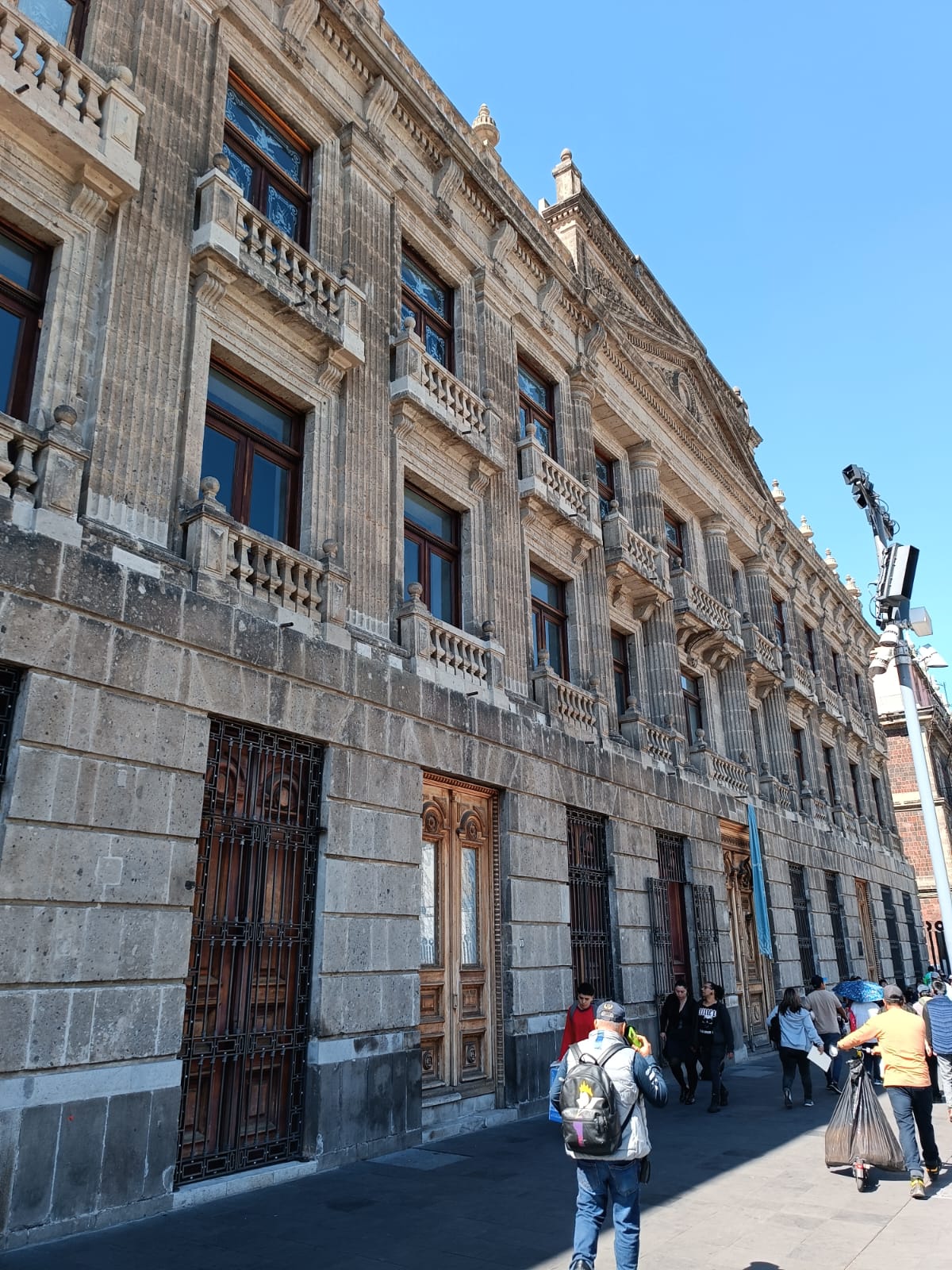
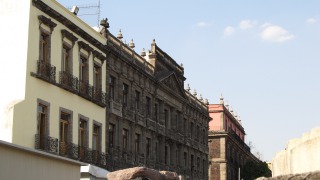
Foto: YoelResidente on Wikimedia Commons
El Palacio del Marqués del Apartado es la obra decenal (1795-1805) de Manuel Tolsá. Una de las obras más grandes de finales del siglo XVIII, hoy se enfrenta al sitio Templo Mayor que fue descubierto a partir de la década de 1980. En la esquina de la calle de Donceles y la República de Argentina, es probablemente una de las obras menos conocidas de Tolsá. Es un trabajo asombroso para su edad.
Obra de estridente neoclasicismo, el edificio cuenta con dos fachadas en sus respectivas calles, y tres niveles. Ambas fachadas están revestidas de la piedra gris que se extrajo de ahí.
En 2005, el edificio quedó bajo el control del Instituto Nacional de Antropología e Historia (INAH). Múltiples artefactos relacionados con el Templo Mayor han sido encontrados dentro y debajo del edificio. Un inolvidable retablo del Águila Cuauhxicalli fue descubierto allí en 1985 y está hoy en día en la colección del INAH.
Francisco Fagoaga y Arozqueta heredó de su padre, Francisco de Fagoaga Yragorri el cargo de Apartador General de la Nueva España. El apartado de Oro y Plata fue un establecimiento industrial donde se molían y fundían las barras minerales provenientes de las minas. Tras fundir y separar el oro de la plata en forma de barra se devolvía al dueño, quien lo llevaba a la Casa de Moneda para su amonedación. Y heredó de su madre, doña María Josefa Arozqueta de las Heras Alcocer, una Casa Mercantil de importaciones y exportaciones. En 1772 recibió don Francisco Fagoaga y Arozqueta el título de Marqués del Apartado por el monarca Carlos III. El Marqués le encomendó al Maestro de Arquitectura de la Academia de San Carlos, don Manuel Tolsá, la construcción de su palacio a unas calles de la Plaza Mayor, hacia 1796. Con el tiempo, el edificio fue modificado para las oficinas de la Secretaría de Justicia e Instrucción Pública y otras más, pero las excavaciones arqueológicas dejaron al descubierto la escalinata del Coateocalli, Casa de la Serpiente.
Ruta del Corazón de México: Ruta Loreto-San Ildefonso
< < Colegio de San Ildefonso | Antiguo Colegio de Cristo > >
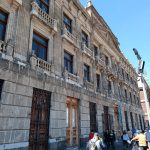
Ruta del Corazón de México: Ruta del México Antiguo
< < Pino Suárez / Ehécatl | El gran Tzompantli > >
Proyecto “Corredor de Cultura Digital”. Nombre de la investigación: Investigación Centro Histórico, Monumentos, Edificios y Puntos de Interés (2023)
Dirección de investigación y diseño de Rutas: Acércate al Centro A.C. Guadalupe Gómez Collada
Coordinación e investigación histórica: Fideicomiso del Centro histórico Dir. Maestra Loredana Montes
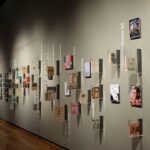
Cercano a 0.05 kms.

Cercano a 0.05 kms.
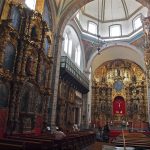
Cercano a 0.06 kms.
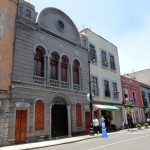
Mexico City's historic and first-recognized Jewish temple . . .
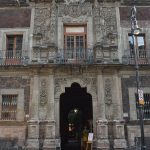
Una colección gráfica moderna en un destacado palacio barroco del siglo XVIII.
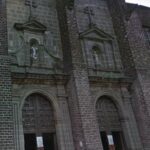
Una sorprendente obra barroca de Pedro de Arrieta resiste el paso del tiempo.
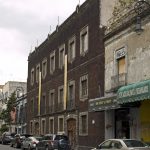
Uno de los primeros templos de la Ciudad de México es hoy un centro cultural y museo.
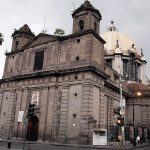
Una de las iglesias neoclásicas más llamativas del centro de la ciudad, la Iglesia de Nuestra Señora de Loreto es también una de las más torcidas